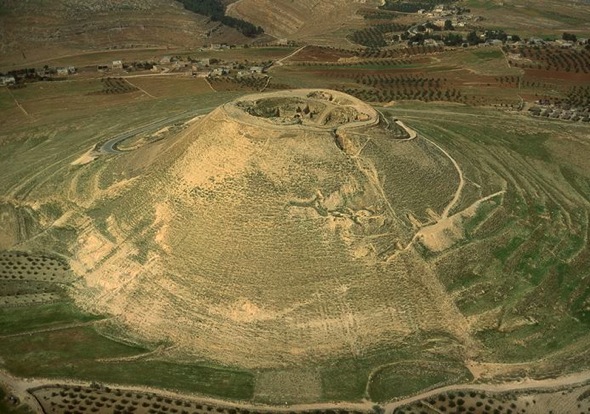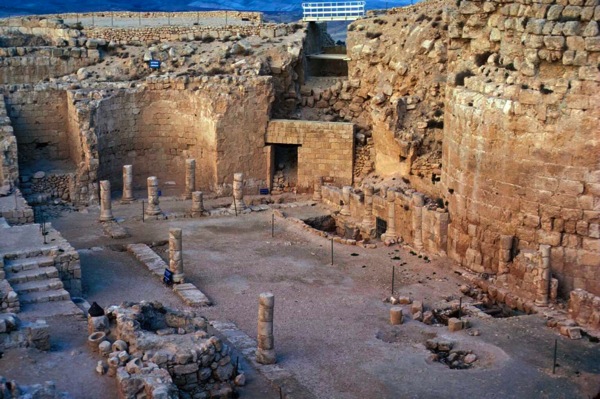Herod's Tomb Discovered at Herodium

Image above from the Accordance Bible Lands PhotoGuide 2.0. The Fortress at Herodium was built atop a hill and surrounded with huge quantities of earth, creating an artificial cone-shaped mountain.
Most of you who are interested in these kinds of things have probably already seen this. But in case you missed it, here's the nutshell from Ynetnews.com:
King Herod's tomb discovered, Israeli university says
Hebrew University announces discovery of Roman king's tomb at Herodium near Jerusalem
Reuters
Published: 05.08.07, 00:50 / Israel News
The Hebrew University of Jerusalem announced on Monday the discovery of the grave and tomb of Herod the Great, the Roman empire's "King of the Jews" in ancient Judea.
The University said in a brief statement the discovery was made at Herodium, where Herod's hilltop fortress palace once stood some 7 miles from Jerusalem.
The university said it would give further details at a news conference on Tuesday.
The Roman Senate appointed Herod "King of the Jews" in approximately 40 BCE. He was also well-known for the magnificent structures built at his behest. In addition to the Herodium fortress, he was responsible for the building of Masada and the expansion of the Second Temple in Jerusalem.
He also created new cities such as Caesaria and Herodion. According to the ancient Jewish historian Falavius Josephus, Herod died in 4 BCE.
Herod is mentioned in Christian tradition, as well as Jewish tradition: The Gospel of Matthew says heordered the "Massacre of the Innocents", the killing of all young male children in Jesus' birthplace of Bethlehem out of fear he would lose his throne to a new "King of the Jews", whose birth had been related to him by the Magi.
According to Matthew, Joseph and Mary fled with baby Jesus to Egypt to escape the slaughter.
Lilach Shoval contributed to this article.
Another image from the Bible Lands PhotoGuide:

The entrance to the mountain fortress at Herodium. The mountain fortress at Herodium was approached by an imposing series of steps leading up the northeast slope. These gave access to the gate seen here.









